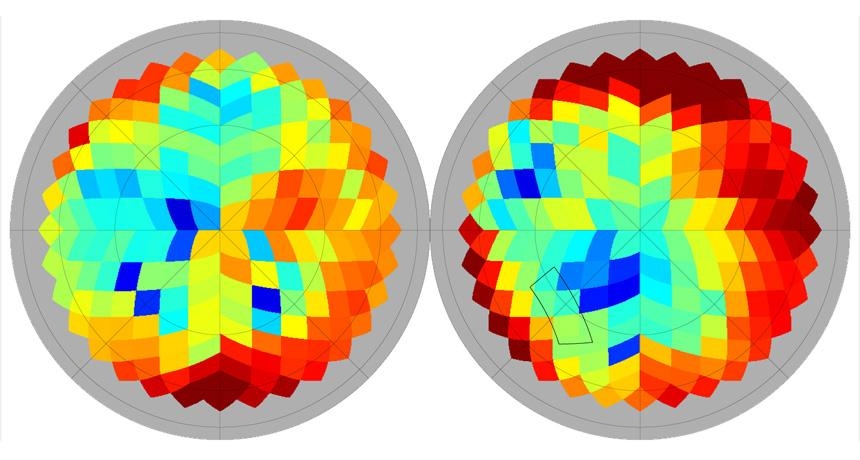Year in review: Dust obscures possible gravitational wave discovery
Ancient ripples in the fabric of the space square off against soot in the galaxy
NOT-SO-CLEAR SKIES The signal that BICEP2 researchers interpreted as gravitational waves may be due to interstellar dust. The Planck satellite mapped dust in the entire sky. The map shows the sky above the plane of the Milky Way (left) and below the galaxy’s plane (right). Planck found areas heavily contaminated by dust (red) and regions that are relatively clean (blue). The black box shows where BICEP2 searched for gravitational waves.
Gravitational waves from the Big Bang captured worldwide attention in 2014. But then interstellar dust clouds stole
the show.
Detection of such waves — ripples in the fabric of space — would be direct evidence for the theory of cosmological inflation, a brief epoch immediately after the Big Bang when the visible universe abruptly swelled to at least 1075 times its initial volume.
In March, astrophysicists thought they had captured their elusive gravitational wave quarry. Researchers with the BICEP2 project reported swirling patterns in the alignment of electromagnetic waves in the cosmic microwave background, or CMB, the primordial light released into the universe about 380,000 years after the Big Bang (SN: 4/5/14, p. 6). Those patterns supposedly reflected the influence of gravitational waves launched during the epoch of inflation.

There are no published comments.
New comment